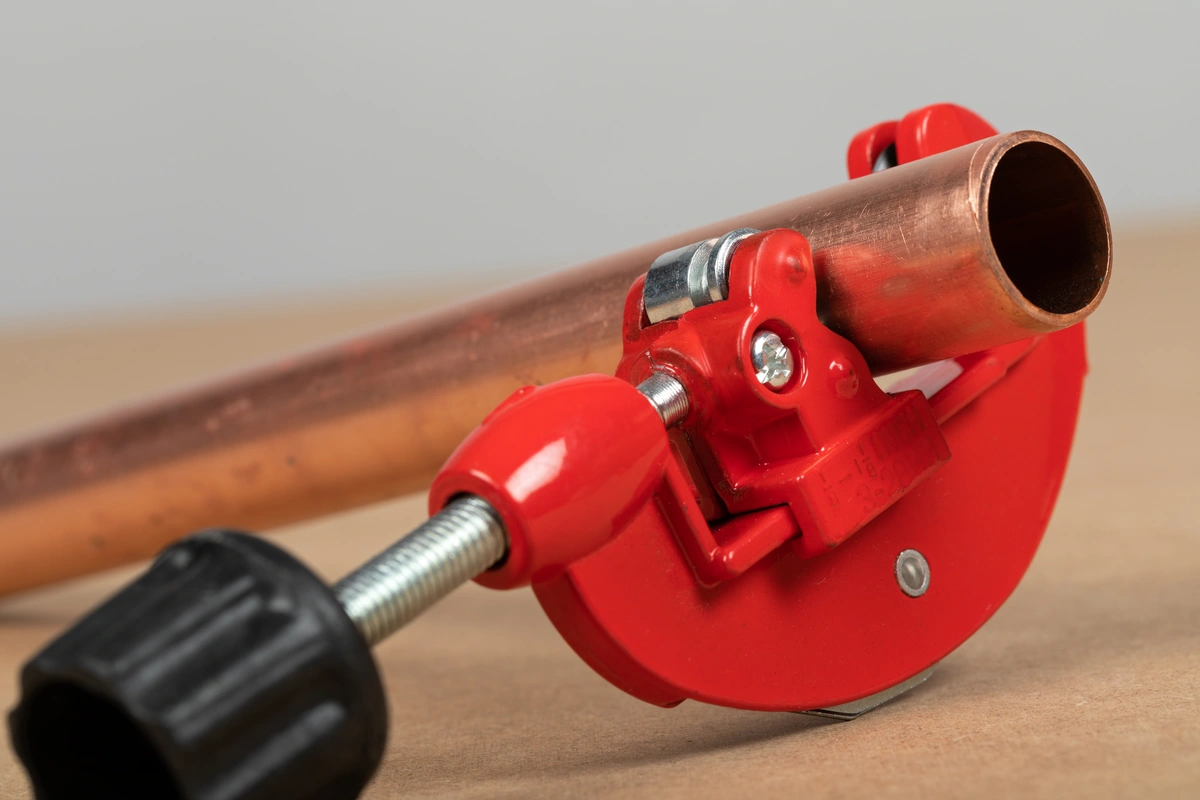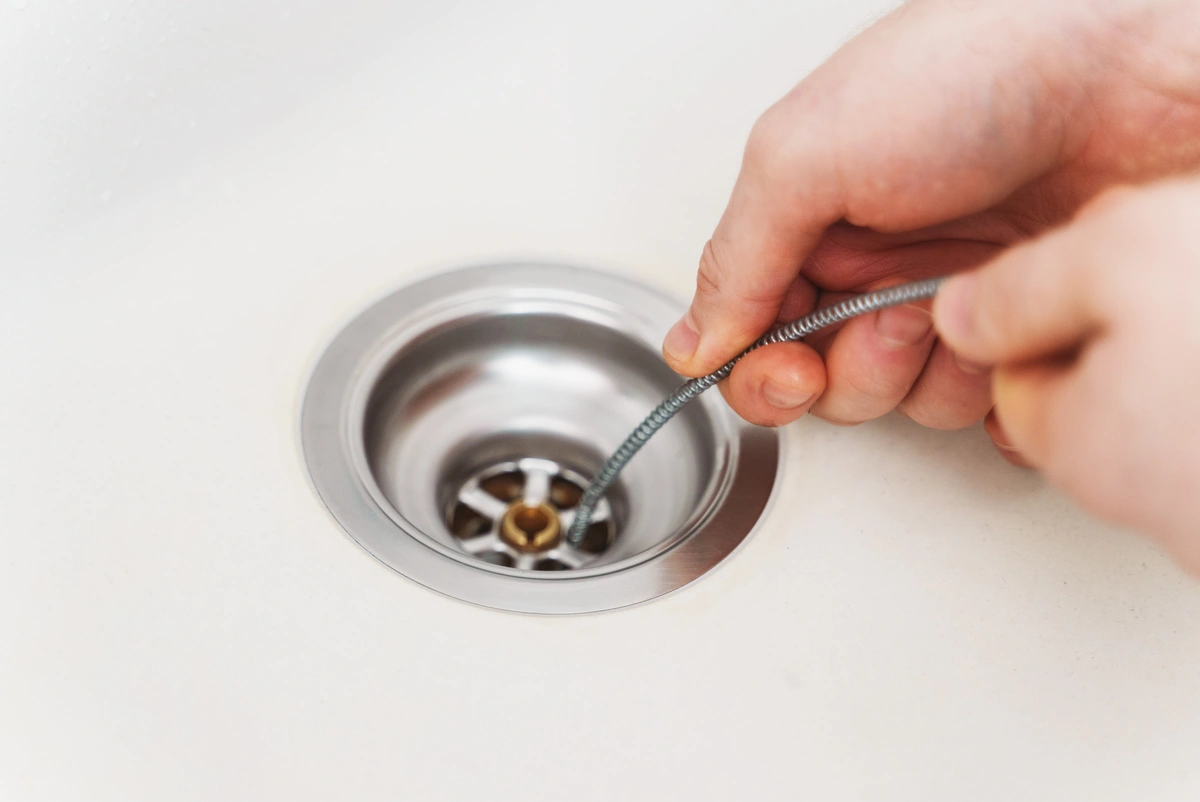Imagine the satisfaction of fixing a leaky faucet or unclogging a stubborn drain all by yourself. With the right plumbing tools at your disposal, you can tackle a wide range of plumbing tasks, save money, and gain a sense of accomplishment. In this post, we’ll explore various categories of tools, from essential plumbing tools to safety equipment and specialty tools, that will make your plumbing jobs easier and more efficient.
Key Takeaways
- Having the right plumbing tools is essential for successful operations.
- Invest in mid-grade tools from reputable brands and store them properly to increase efficiency.
- Safety equipment, consumables, power and specialty plumbing tools are all necessary components of a comprehensive toolkit.
Essential Plumbing Tools for Every Situation

Plumbing tasks can be daunting without the right tools. Equip yourself with vital plumbing tools like pipe wrenches, basin wrenches, and tubing cutters for operations involving pipes. These tools facilitate the tightening and loosening of nuts and fittings, cutting of pipes, and accessing confined areas.
Possessing the best plumbing tools, including professional plumbing tools, can significantly impact your plumbing tasks, especially for plumbing businesses. A well-curated plumbing tools list is essential for success in this field.
1. Pipe Wrenches
A pipe wrench is an indispensable tool for gripping and turning pipes and fittings. These wrenches come in various sizes, and their adjustable design allows for a firm grip on round objects such as pipes. Using two pipe wrenches together can provide extra leverage, with one wrench holding the pipe in place while the other rotates the nut or fitting. This technique is a favorite among professional plumbers, as it saves time and effort when working on plumbing systems.
In addition to standard pipe wrenches, there are also specialized versions designed for specific tasks. For example, some pipe wrenches are designed for working with plastic pipes, while others are designed for use on gas lines or copper piping. Investing in a set of superior pipe wrenches equips you to handle various plumbing tasks.
2. Basin Wrench
A basin wrench is another essential plumbing tool, specifically designed for working in tight spaces. This specialized wrench, similar to an adjustable wrench, features a rotating, self-adjusting gripping head and a long handle, making it perfect for tasks that involve turning fasteners in confined spaces, particularly on faucets. Its unique design allows it to access nuts and bolts that are difficult to reach with other tools.
For both professional plumbers and DIY enthusiasts, a basin wrench is an indispensable tool for tasks involving sinks and faucets. This practical tool eases your work and lets you concentrate on the task rather than wrestling with hard-to-reach areas.
3. Tubing Cutters

Tubing cutters are essential tools for plumbing work that involves cutting pipes. These cutters are designed to provide clean, accurate cuts on a variety of pipe materials, such as copper and PVC. The cutting wheel slices through the metal while the pressure wheel applies pressure as the cutter is rotated around the pipe, resulting in a precise cut.
In addition to their primary function of cutting pipes, tubing cutters also come with a de-burring tool, which is used to remove any burrs on the inner surface of the pipe after cutting. Including a high-quality tubing cutter in your plumbing toolkit prepares you for any pipe-cutting tasks.
Drain Clearing and Clog Removal Tools
Clogged drains can be a major hassle, but with the right tools, you can easily clear blockages and get your plumbing system flowing again. Plungers and hand augers are specifically designed for this purpose, making them indispensable additions to your plumbing toolkit.
4. Plungers
Plungers come in various types and sizes, each designed for effectively clearing clogs in different plumbing fixtures. The cup plunger, for example, is ideal for clearing clogs in sinks, tubs, and showers. Its rubber cup creates a strong suction that dislodges blockages when plunged up and down.
For toilet clogs, a flange plunger is the preferred choice. This plunger features a unique design with an extended flange that fits snugly into the toilet drain, providing the necessary suction to clear the clog.
Having a variety of plungers in your plumbing toolkit prepares you for any clogging issues you might face.
5. Hand Augers and Snake Machines

When you encounter deep or stubborn clogs, hand augers and snake machines come to the rescue. A hand auger, also known as a plumber’s snake, features a flexible cable with a corkscrew tip that can break up and clear clogs in sink and tub drains. These tools are particularly useful for removing obstructions that are too far down the drain for a plunger to reach.
Snake machines, on the other hand, are larger motorized versions of hand augers that can clear even the most difficult clogs in sewer lines. These powerful tools are designed to tackle heavy-duty blockages and are commonly used by professional plumbers for their efficiency and effectiveness in clearing clogs.
Equipping your plumbing toolkit with both hand augers and snake machines prepares you to tackle any drain-clearing problem.
Safety Equipment and Accessories
Working on plumbing tasks can pose risks to your safety, which is why it’s crucial to have the right safety equipment and accessories on hand. Goggles, gloves, and heat shields are among the essential items that can help protect you while you work on plumbing projects.
6. Goggles and Gloves
Protecting your eyes and hands from potential hazards during plumbing work is essential. Goggles shield your eyes from debris, splashes, and other harmful elements, while gloves guard your hands from sharp edges and chemicals and provide a better grip on slippery items.
When using goggles and gloves, it’s crucial to ensure they fit properly and are in good condition. Replacing them when worn or damaged is equally important, as it ensures your safety and the effectiveness of the protective gear.
Adhering to these precautions reduces the risks linked to plumbing tasks and allows you to concentrate on executing the job correctly.
7. Heat Shields/Pads
Heat shields and pads are essential safety accessories when performing tasks that involve high temperatures, such as soldering. These protective barriers shield surrounding surfaces and materials from heat damage, preventing burns and reducing the risk of fire.
To use heat shields or pads effectively, position them between the heat source and the object requiring protection, ensuring they are firmly attached to avoid displacement during use. Including heat shields and pads in your plumbing toolkit enhances safety and boosts confidence when handling high-temperature tasks.
Plumbing Consumables

In addition to the essential tools and safety equipment, every well-rounded plumbing toolkit should include plumbing consumables, such as plumber’s tape and plumber’s putty. These materials play a crucial role in sealing connections and preventing leaks, ensuring the success of your plumbing projects.
Plumber’s tape is a thin, waterproof tape that is used to seal threaded
8. Plumber’s Tape
Plumber’s tape, also known as Teflon tape or PTFE tape, is a thin, flexible tape used to seal threaded connections and prevent leaks. It’s an essential plumbing consumable that can save you time, effort, and potential water damage by ensuring a watertight seal.
For effective use of plumber’s tape, follow these steps:
- Tightly and uniformly wrap it around the pipe or fitting threads in a clockwise direction, leaving no gaps.
- Make sure the tape is applied evenly and securely.
- This will help create a leak-free connection and ensure a secure fit.
Correct application of plumber’s tape facilitates a secure and leak-free connection, establishing its importance in your plumbing toolkit.
9. Plumber’s Putty
Plumber’s putty is another essential consumable for your plumbing toolkit. This sealing compound is soft and pliable. It is used to make watertight seals around plumbing components such as faucets and drains. Its versatility makes it a popular choice for professionals and DIY enthusiasts alike.
To apply plumber’s putty, follow these steps:
- Clean the surface of the fixture or fitting to ensure proper adhesion.
- Roll the putty into a rope.
- Wrap the putty around the fixture or fitting.
- Press the putty firmly into place.
- Allow the putty to dry.
Having plumber’s putty in your toolkit enables the creation of sturdy, leak-proof seals for a multitude of plumbing tasks.
Power Tools for Plumbers

While not strictly necessary for every plumbing job, power tools can make certain tasks much easier and more efficient. Reciprocating saws and plumber’s torches are examples of power tools that can simplify and expedite a variety of plumbing tasks.
Power tools can save time and effort and can be used to complete tasks that would otherwise be time-consuming and difficult.
10. Reciprocating Saws
A reciprocating saw is a powerful and versatile tool that is used to cut through various materials, such as:
- PVC
- wood
- copper
- steel
Its push-and-pull blade motion allows it to make quick, efficient cuts, making it an excellent addition to any plumbing toolkit.
When using a reciprocating saw, be sure to follow safety precautions, such as:
- wearing safety goggles and gloves to protect your eyes and hands from debris
- ensuring the saw is firmly clamped to the material being cut
- ensuring the blade is sharp and in good condition.
The inclusion of a reciprocating saw in your toolkit readies you for numerous cutting tasks.
11. Plumber’s Torch
Another useful power tool for plumbers is the plumber’s torch, which is used for soldering and connecting pipes. This tool typically uses propane or a similar fuel source to generate a flame that can soften and join copper or PVC pipes.
Before using a plumber’s torch, make sure to follow these safety precautions:
- Ensure the area is well-ventilated to avoid the buildup of toxic fumes.
- Wear safety goggles to protect your eyes from the heat.
- Wear gloves to protect your hands from the heat.
Adhering to these safety guidelines and correct usage of a plumber’s torch enables efficient sealing and connection of pipes for installations and replacements.
Specialty Plumbing Tools
Every plumbing toolkit should also include specialty tools designed for specific tasks, such as faucet keys and press fitting systems. These tools can be invaluable when tackling unique plumbing challenges, making them worthwhile additions to your collection.
12. Faucet Key
A faucet key is a specialized tool used to open and close spigots and sillcocks with different stem fittings. There are flat keys for flat stem fittings and hex keys for hexagonal stem fittings, offering versatility in a single tool.
When using a faucet key, ensure that it’s correctly aligned with the stem fitting and properly sized for the task at hand. Inclusion of a faucet key in your plumbing toolkit readies you for any adjustments involving spigots or sillcocks.
13. Press Fitting Systems
Press fitting systems are another specialty tool that can make your plumbing work more efficient. These systems provide a quick and reliable way of creating watertight connections by pressing the connection onto a pipe.
The press fitting system is favored by installers for its straightforward installation and time-saving advantages. Integrating press fitting systems into your plumbing toolkit prepares you to create secure, watertight pipe connections that are durable.
Building Your Plumbing Tool Kit

Now that you’re familiar with the various tools and consumables necessary for a well-rounded plumbing tool kit, it’s time to focus on choosing quality tools and organizing them effectively.
By following the tips discussed in the next sections, you’ll be well on your way to building a reliable and efficient plumbing toolkit.
14. Choosing Quality Tools
Selecting durable, versatile tools from reputable brands is crucial for ensuring long-lasting performance and reliable results. Invest in mid-grade tools with lifetime replacement warranties, as these will provide the best value for your money.
Quality tools will not only save you time and effort on the job but also help you avoid potential problems caused by inferior tools. Selecting high-quality tools equips you to handle any plumbing challenge.
15. Organizing and Storing Tools
Proper organization and storage of your plumbing tools are essential for easy access and maintenance. Consider using totes, toolboxes, or compartments to separate and compartmentalize your tools, making it easier to quickly identify the right tool for the job.
Additionally, use pegboard hooks or wire shelving to hang and store larger power tools and their cords. Maintaining an organized and easily accessible tool collection allows for increased efficiency and confidence when handling plumbing tasks.
Summary
In summary, building a well-rounded plumbing tool kit requires a combination of essential tools, safety equipment, consumables, power tools, and specialty tools. By choosing quality tools and organizing them effectively, you’ll be well-prepared to tackle a wide range of plumbing tasks with confidence and efficiency. So go ahead, start building your plumbing toolkit today, and be ready to face any plumbing challenge that comes your way.
Frequently Asked Questions
What tools are used by a plumber?
Plumbers use a variety of tools, including wrenches, pipe wrenches, basin wrenches, adjustable wrenches, faucet keys, hacksaws, tubing cutters, plastic pipe cutters, plumber’s torches and thread sealing tape.
Which five tools are most common to plumbing?
The essential plumbing tools every housekeeper should have are a Toilet Auger, Flange Plunger, Plumber’s Snake or Sink Auger, Faucet Valve Set Wrench, and an Adjustable Pipe Wrench.
What are the three basic plumbing units?
The three basic plumbing units are water supply, water heating, and drainage, which form the foundation of your plumbing system.
How can I ensure my safety while working on plumbing tasks?
Protect yourself while working on plumbing tasks by wearing safety equipment, such as goggles, gloves, and heat shields.
What is the purpose of plumber’s tape?
Plumber’s tape is used to create a waterproof seal around threaded connections, helping to prevent leaks.



